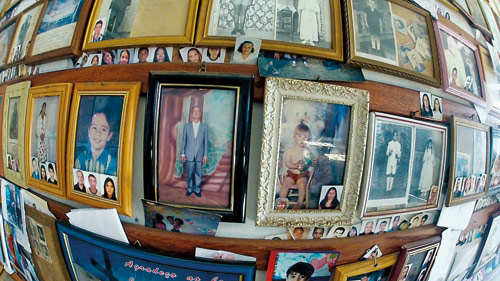2014
Yochai Avrahami
What do a ghost train, a crime museum and a parading samba school have in common? For Yochai Avrahami, these elements present three ways of telling stories. What is of interest here aren’t the actual stories, but rather the devices developed to tell them, with a particular focus on atrocities – large-scale massacres, displacements of populations or natural disasters.

Avrahami studied memorials, museums and monuments that were created by public authorities or ordinary citizens in Israel and other parts of the world. These tell their versions of historical facts as if there were no other sides to the story. Using the most varied artifices, transforming narratives into spectacles and stories according to strict plot-lines, these devices are devices of power: those who know how to recount history take power and exert it. In Brazil, Yochai came across the reverse situation: those in power aren’t so interested in recounting history as they are in making sure that others do not know how to – perhaps because those who are capable to do so are involved with atrocities that they silence.

Avrahami’s studies led him to Rio de Janeiro, Minas Gerais and São Paulo. Of the many possible places of memory, he visited the Slave Museum in the outskirts of Belo Horizonte, the excavations of the Valongo Docks in Rio, and the project for the São Paulo Penitentiary Museum on the site of the old Carandiru prison. From these encounters, Small World, Avrahami’s contribution to the 31st Bienal, aims to reflect on the absence or fragility of the devices that sustain narratives – national or local, official or unofficial – leaving room to perhaps invent different ways of telling stories. Through a monumental, funfair-like installation, the artist proposes a situation where there is no history: a museum for something that does not exist, a scam in which memory turns flexible in order to once again become emancipatory. – BS
